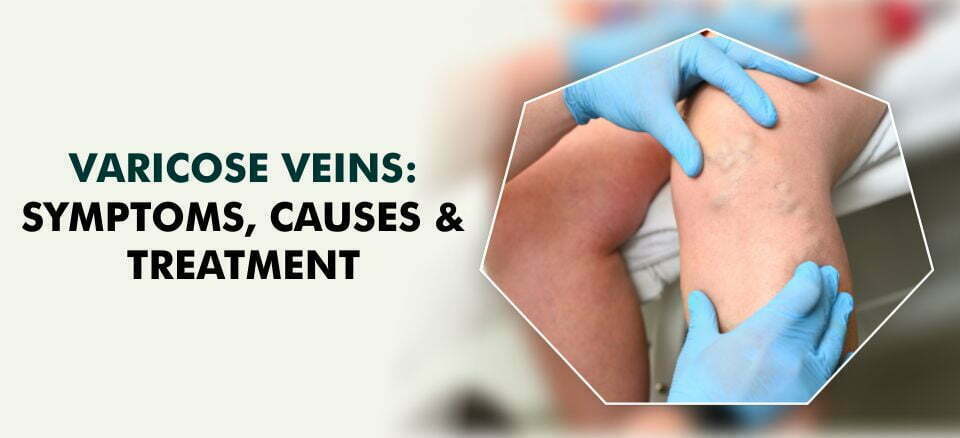


[vc_row][vc_column][vc_column_text]Do you often feel heaviness or achiness on your legs or are you conscious about their changing appearance? Well, these changes may occur because of Varicose veins.
Varicose veins are a common condition that can affect people of any age. Certain studies show that this condition affects up to 3 in 10 adults. Therefore, it is essential to look for its symptoms and when to seek treatment.
Varicose veins are twisted, dilated, or enlarged veins that often appear on your leg and feet. These veins can occur when the valves in the veins do not work properly, which may also cause the blood to flow in the wrong direction or pool.
These veins typically appear swollen and have a bluish-purple or red color.
Weak vein walls and valves primarily cause varicose vein. The walls of the veins may become stretched and may lose their elasticity. If any of the valves do not function properly, they can cause the blood to leak and flow backward.
However, there can be several reasons that can increase your likelihood of developing varicose vein, including:
These conditions can cause varicose veins and can also affect the normal functioning of your body. Therefore, it is essential to recognize the early symptoms of varicose veins.
Many people may have no symptoms from their varicose veins. However, sometimes they are noticeable, and their appearance can be embarrassing. The primary sign of varicose veins usually occurs on your legs.
In some cases, you can also develop swelling. Moreover, in severe cases, the veins can bleed significantly, and ulcers can form. However, the most common symptoms of varicose veins may include:
Based on your specific symptoms, a doctor will suggest the required treatment. Your doctor will likely examine your legs and visible veins to diagnose your condition.
They may ask you about the symptoms. In some cases, the doctor can suggest an ultrasound. It allows your doctor to see the blood flow in your veins.
However, doctors are quite conservative in the treatment of varicose veins. You may get advice to make changes to your lifestyle instead of going for more aggressive treatments. Certain lifestyle changes may help prevent varicose veins:
However, if lifestyle changes won’t work or if your varicose veins are causing a lot of pain, your doctor might try invasive treatments. Vein ligation is a surgical treatment where a doctor cuts varicose veins and removes them through the incision.
Additionally, there are a variety of minimally invasive treatment options for varicose veins. These include:
But before choosing any treatment option, you should talk to your doctor. The method recommended may depend on your symptom, size, or location of a varicose vein.
At Amandeep Group of Hospitals, you have access to highly qualified doctors from various specialties. We, as a team, work towards the aim to save each precious life. Our best cardiology department has years of experience in treating and managing conditions in your veins.
Book an appointment and get the most effective treatment.[/vc_column_text][/vc_column][/vc_row]
September 30, 2024
Recognize the Signs: Understanding Appendicitis Pain Symptoms
September 24, 2024
Unveiling the Truth: I-Pill Side Effects Every Woman Should Know
We use cookies to enhance your experience. By clicking "Accept", you agree to our use of cookies.